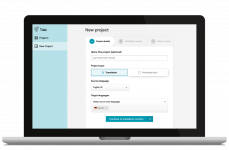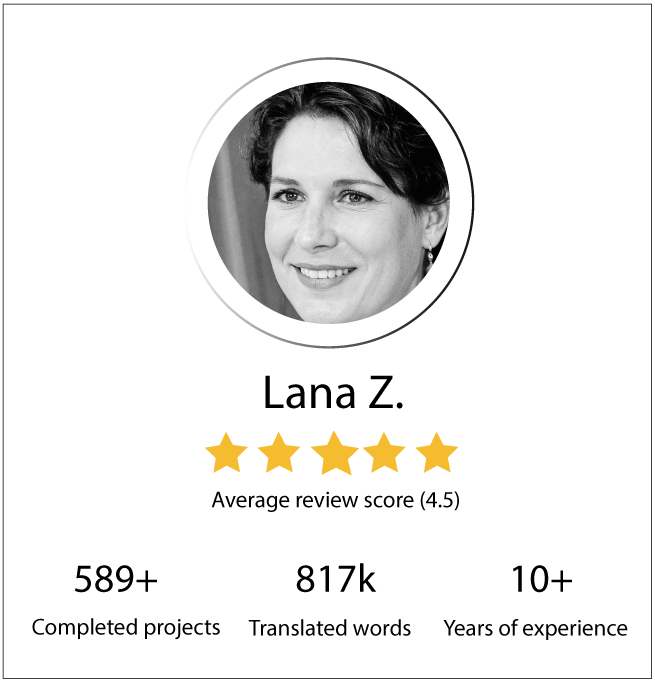Professional Arabic Translation Services
Deliver your message to more than 422 million Arabic-speaking people and improve your international strategy, with our cost-effective, AI-supported, and high-quality Arabic translation services. We translate for you, so you can focus on the important stuff!



Taia translation platform - the future of translation
Translate Documents from English to Arabic and Arabic to English easier than ever before
Taia is a modern online translation solution that takes care of all your translation needs.
Ordering localization services has never been simpler. With our fast and super-intuitive translation platform, you are always in control.
Meet our Arabic Translators
Our broad network of highly qualified Arabic translators consists of both a team of internal translators and the freelancers we work with. Both internal and freelance translators are highly experienced linguists with an in-depth understanding of the translation requirements in various industries, a minimum of 5 years of translation experience, and a linguistic degree from a relevant academic institution.
All of our translators are carefully chosen and go through a rigorous onboarding process to ensure that we provide the highest possible quality services. Therefore, every single project will be handled by a translator who will meet all your requirements and deliver the best possible Arabic translation service. On top of that, we also have ISO 17100 certification, so we can guarantee top-quality translation services.



“The Taia platform is easy to use. The customer support and accessibility of the Taia team is excellent. The translations are of good quality and delivered as agreed. Technology offers affordable prices. Very satisfied.”
Arabic document translation
Arabic legal translation
Arabic software/app translation
Arabic marketing copy, advertisements and social media content
“We’ve been working with Taia for many years now. During this time we established a very pleasant business relationship. We can describe their work as fast, reliable, very professional, and high quality. They listen to their customers’ needs and always deliver as expected.”
Aleša Mikuš, Product EHS&R Leader @3M East AG


We have the most flexible translation pricing in the industry!
Get your custom price now and start delivering winning content.
About the Arabic language


Fun Facts about the Arabic Language
- Arabic is written with the Arabic alphabet, which is an abjad script and is written from right to left.
- Arabic usually refers to Standard Arabic, which Western language experts divide into Classical and Modern Standard Arabic.
- Due to the widespread distribution of Egyptian films and media, Egyptian Arabic is one of the most understood varieties of Arabic.
- Classical Arabic is associated with the religion of Islam because the Quran was written in Arabic.
- English has many Arabic loanwords. Examples of such words are admiral, adobe, alcohol, algebra, cotton, jar, artichoke, coffee, etc.
- Arabic is usually classified as a Central Semitic language and is related to other Semitic subgroups such as Syriac, Hebrew, Aramaic, etc.
Quality Guarantee

ISO 17100 defines the roles of the translator, their technical resources and the quality of service. It also outlines the best practices for translation companies to ensure communication between clients and the translator for all completed tasks.
Find out more about ISO quality standard.


Hey!
My name is Alenka and I can help you find the most suitable, efficient and cost-effective solutions for all your Arabic translation needs.
If you have any questions feel free to email me. I will be more than happy to help you!
Frequently asked questions
What is the difference between high context and low context cultures?
The terms are used to describe the differences in verbal and nonverbal communication among societies and cultures. High context refers to societies or groups where people have close long-lasting relationships, and use communication that focuses on underlying context, meaning, and tone in the message, and not just the word themselves.
Low context refers to societies where people don’t have such a long-lasting relationship due to specific reasons. In these societies, cultural behavior and beliefs may need to be spelled out explicitly for those coming from different environments. Low context communication minimizes the confusion about different social values, norms, and rules.
Is Arabic important for business?
Arabic is the official language of over 20 countries and is spoken by more than 420 million people, making it the fifth most spoken language in the world. The economy of Arabic-speaking countries has risen with lightning speed in recent years, putting them on the map as major players in the global economy. Arabic is currently ranked on the Power language Index as the 5th most important language in the world.
